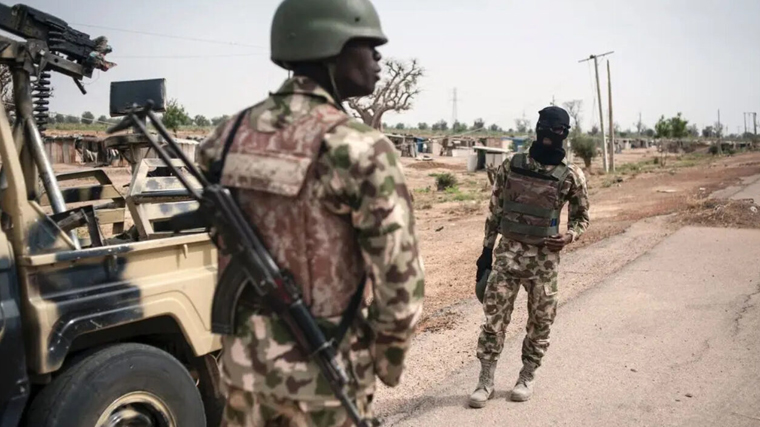By Jim Steele
Egregious cherry-picking by alarmist climate scientists attempts to delude the public into believing that a slight increase in wildfire burnt acres can be blamed on rising CO2. First, they dishonestly ignore the scientific evidence that far more fires happened before the 1930s when CO2 and global temperatures were much lower than today (Graphic A).
Nonetheless, Daniel Swain, click-bait media’s go to “scientist”, myopically sees every negative environmental change as a function of rising CO2 due to his tutelage under alarmists Michael Mann and Noah Diffenbaugh. So unsurprisingly Swain falsely pontificates, “Recent work points toward anthropogenic climate change rapidly altering Western United States (WUS) fire regimes to produce overall more extreme wildfires.”
Sadly, Swain is just a useful idiot of the World Economic Forum’s push for global governance claiming, “Slowing and reversing the accumulation of CO2 and other greenhouse gases in the Earth’s atmosphere will slow the acceleration of wildfire risk.”
(https://x.com/JimSteeleSkepti/status/1814681971664052663/photo/1)
Despite evidence that heat waves have no significant effect on grassland flammability, Swain argues, “Any significant heat wave “has been made substantially more likely and warmer than it otherwise would have been as a result of human-caused climate change.” But regions experiencing cooling trends like the US warming hole, also experience extreme heat waves.
Read: Science of Heat Waves Reveals Blaming CO2 is a Scam! https://x.com/JimSteeleSkepti/status/1799125891731329105

To push the climate crisis-wildfire connection, dishonest scientists cherry-pick wildfires in California and western USA as proof of a climate crisis. But the western USA is naturally much drier than the eastern USA (Graphic B) and thus more prone to more frequent and more widespread fires. People outside the western USA, (and outside southern Europe’s similar climate), are surprised to learn that hardly any rain falls during the summer in California’s Mediterranean climate (Graphic C) resulting in natural dryness that supports more fires.

Additionally dishonest scientists falsely push climate change by ignoring the relationship between naturally dry climates and fire prone vegetation. Dishonest scientists avoid describing easily ignited grasslands and shrubs that burn three times more acres than forest fires. Grasses and shrubs are classified as 1-hour and 10-hour fuels, because they become highly flammable in a few days of dry weather no matter how climate has changed. In Prescribed Burning in the California Mediterranean Ecosystem (1982), Green advised that complete prescribed burns in grasses can be set “soon after rainstorms”, and in small brush in just several days.

Grasslands cover a large portion of California (brown color, Graphic D). Grasslands are the most fire prone habitat during California’s natural summer drought. Dead grasses and shrubs fuel the most easily ignited, fastest spreading and most extensive wildfires. Grasses and shrubs have driven California’s biggest fires, as is currently happening in California’s Park Fire. Forested areas experience fewer wildfires (Graphic E) and are often driven by dead grasses and shrubs that provide a path for fires into the forest floor and provide a source of sufficient heat for ignition. Grass fires burn at temperatures of 1000+ Fahrenheit. The increased temperatures of just 2.7F (1.5 C) from climate change makes no difference regards a grass fire’s ability to ignite brush and debris on the forest floor.

In the past grass fires passed across forest floors without burning the trees. However, years of 20th century fire suppression has caused brush and debris to accumulate and provide the increased heat required to ignite bigger logs (1000-hr fuels) and trees.
Between the lower elevation grasslands and the higher elevation forests, grasses carry fire into the open Oak woodlands (dark green, Graphic D) which is the common habitat around Chico and the Park Fire (Graphic F). Elsewhere grasses carry fire into chapparal/shrublands (Graphic G). The current Park Fire has rapidly spread though such grasslands and to date has become California’s 7th biggest fire.

For California, and most of the western USA, annual grasses die by early summer and naturally become highly flammable from June through September, as their fuel moisture content drops below 10%. Summer heat waves that raise average maximum temperatures by a few degrees, do not increase grass flammability to any significant degree. Nor do metrics of a higher vapor pressure deficit further affect dead grass flammability.
However, what is rarely pointed out by alarmists fixated on attributing large fires to climate change, the western US has increased the biomass of highly flammable invasive annual grasses. Non-native grasses, like cheatgrass, have invaded increasingly larger expanses of habitat (Graphic H), with cheat grasses accounting for much of the greater burnt areas from wildfires (compare graphics B an H). Wetter El Nino years further increase the amount of grass that then serves as fire fuel the following year.
Finally in contrast to Swain’s alarmist rants that “Butte County (i.e. Park Fire) has become a “poster child” over the past decade for what can happen when a warming climate triggers extreme summers and winters”, Swain ignores the local temperatures and the U.S. Historical Climatology Network evidence that northern California’s maximum temperatures were warmer in the 1910s to 1930s (Graphic I from Chico and Park Fire). Thus, Swain’s and bogus narratives from the World Economic Forum are not supported by scientific evidence that global warming has made “Extreme Heat Waves are 5 times more likely in the past 150 years.”
CO2 has not caused “more extreme wildfires”!
(Read: Science of Heat Waves Reveals Blaming CO2 is a Scam!
https://x.com/JimSteeleSkepti/status/1799125891731329105 )
Related




















Discussion about this post